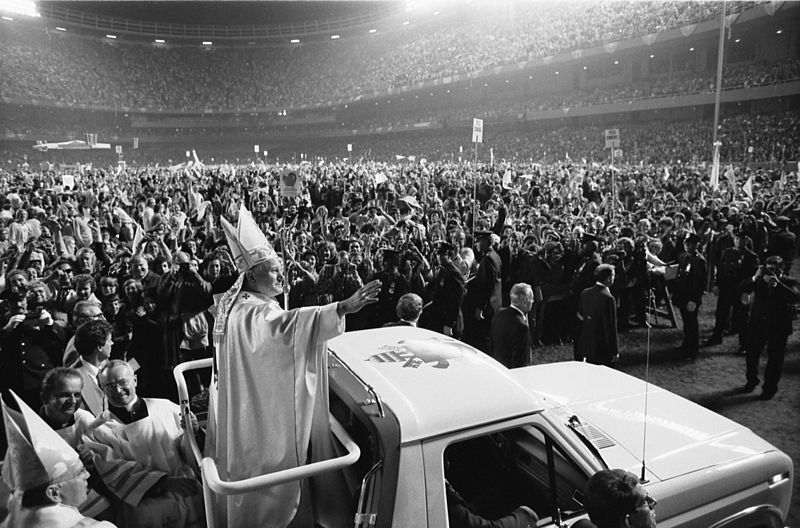Image: Totila and Saint Benedict, by Italian painter Spinello Aretino (c. 1400)
In modern cities, it is possible to become a hermit unintentionally. A new book suggests practical steps to avoid that fate
By Francis Phillips, Catholic Herald, Wednesday, 5 Sep 2018
In her recent book, Building the Benedict Option (Ignatius Press), author Leah Libresco explains that, like other Christian writers and bloggers such as Rod Dreher, author of The Benedict Option, she found her inspiration from philosopher Alasdair MacIntyre’s influential work, After Virtue.
MacIntyre, having surveyed the arid modern world of philosophical discourse, had written:
“What matters at this stage is the construction of local forms of community within which civility and the intellectual and moral life can be sustained through the new dark ages which are already upon us…We are waiting not for a Godot, but for another – doubtless very different – St Benedict.”
No serious Catholic will doubt that we are living in a “new Dark Ages”, both within the Church and outside it. St Benedict, in response to the decadence of ancient Rome, chose to live as a hermit, and then later to found a monastic way of life for men.
Libresco, who is young, married and who converted to Catholicism after graduating from Yale, is searching for the best way to create a Christian “community” among her friends – and potential friends – while they are all living and working in scattered locations across a large city.
As she notes, “the atomised nature of modern life makes it possible to become a hermit unintentionally” (unlike St Benedict). Her simple solution is to recreate the idea of Christian hospitality: to invite friends over for a simple dinner and include prayer at some stage during the occasion; often the Divine Office, as this prayer connects us to “Catholics across the world who [are] all praying these same psalms together”.
Her short and very readable book discusses the pros and cons of this form of hospitality: what to do about non-Catholic friends; whether to micro-organise or not; where is the most convenient meeting-place for people with a long commute, and so on. Libresco is honest about the difficulties involved in what might seem a regular, low-key, exercise of human charity, admitting that she sometimes forgot the purpose of these gatherings and “tended to act as though I had ushered God out along with the departing guests”.
Along the way is much sensible advice. Instead of asking new guests what their job is or where they live, Libresco suggests asking “What’s something interesting that you’ve recently read?” The question could easily be reframed to enquire about music, prayers, art, experiences of nature or their favourite saint.
This of course raises the reader’s question, “Why should I do more than just continue my normal Catholic life?” The answer is, as the author has grasped, taking her cue from MacIntyre, has grasped, it isn’t possible to bury one’s head in the sand of comfortable, undemanding, devotional life any longer. We need community, especially if we want to progress in the spiritual life.
One might respond, “But that is what parishes are for”. They might have performed this function in the past, when Catholics lived and worked locally, but today the old parish model isn’t suited to modern needs in the way that a flexible, adaptable and apostolic lay hospitality is. And, as Libresco observes of social gatherings, “For Christians, it is impossible just to be with each other without some space for prayer”. She subtitles her book, “A Guide to Gathering Two or Three Together in His Name”. It is well worth pondering.
http://www.catholicherald.co.uk/commentandblogs/2018/09/05/how-to-build-a-community-in-the-new-dark-ages/







